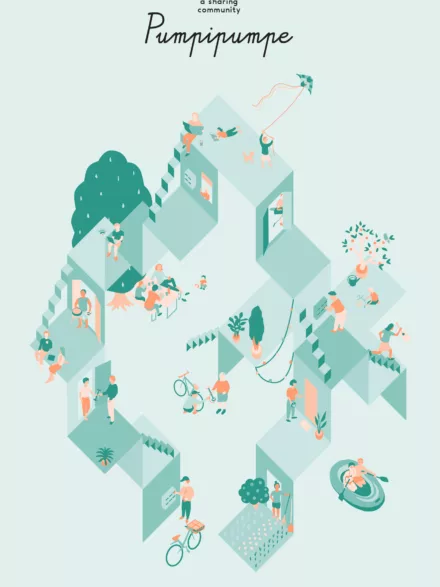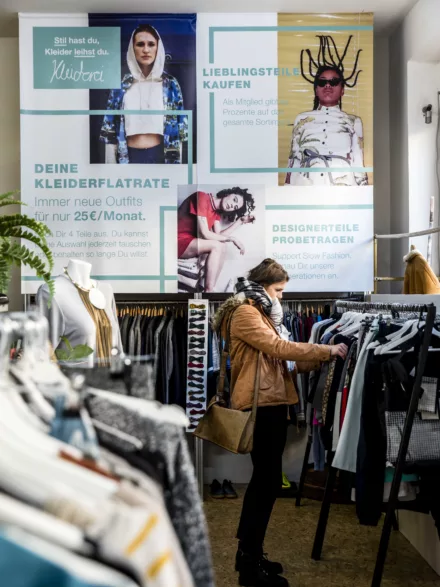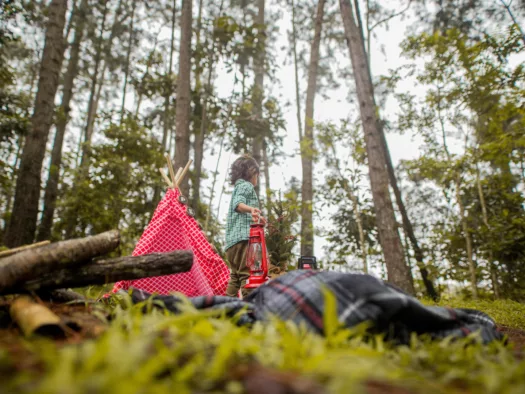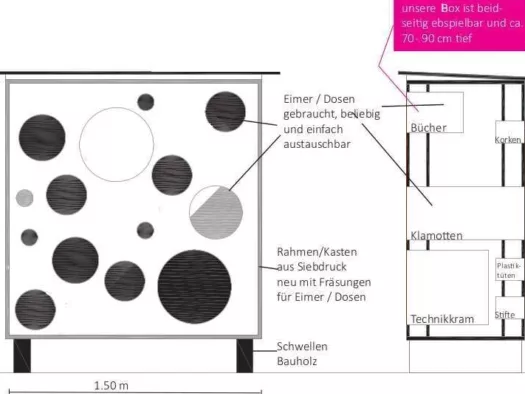
Borrowing and sharing
The time of “my house, my car, my boat” is for many a thing of the past. More and more people are using cars, books, clothing and tools cooperatively. Just how many drills does an apartment building need and how often is the hedge trimmer actually put to use? Things that are shared can be better and more intensively used, are longer in use, and less of them need to be manufactured. At the same time, if you can simply borrow what you need it is also much easier to try out new things. This saves resources and is also a chance to finally get to know the neighbors better.

Things that are shared can be better and more intensively used, are longer in use, and less of them need to be manufactured. At the same time, if you can simply borrow what you need it is also much easier to try out new things. This saves resources and is also a chance to finally get to know the neighbors better. Projects and examples:
Pumpipumpe
The “Pumpipumpe” stickers facilitate the process of sharing things between neighbors. The little images from this association from Bern can be put on your mailbox to indicate all the items you are willing to lend. Your neighbors can thus clearly see what things are available for borrowing.

Photo: Pumpipumpe
Kleiderei
With the principle of borrowing you can also fill your own wardrobe sustainably. You can borrow clothes from the stores of the “Kleiderei” in Cologne and Freiburg. The whole thing works like a shared wardrobe: your favorite items can be borrowed for as long as you like or exchanged flexibly at any time. Further shops in which users can borrow everyday fashion for a monthly fixed amount of 29 euros are currently being planned.

Photo: Mona Schulzek
Sharewood-Forest
If someone has property in a natural setting, they can share it with others via this Karlsruhe based online platform. Nature lovers will thus be able to find a place to camp in areas where it is normally not allowed. One has to register on the Internet platform in order to discover the places being offered by others. It is agreed that no rubbish will be left behind and nature will remain unscathed.

Photo: Caleb Oquendo from Pexels
Share4Good
Many things are available for lending on this Darmstadt online platform while at the same time money can be made for the association of your choice. Things that are not in constant use can be offered for a small lending fee, which is then donated to a selected association or initiative.

Photo: Share4Good
Cosum
This online network provides people with the opportunity to offer or pick up items and to network with others. “Cosum” is also working on a freestanding “Cosum-Box” that can be used in cities as an alternative to the trashcan. Objects that would otherwise end up in the garbage, but which still have a benefit for others, can be both discarded and found in the box.

Photo: Cosum
OpenBookCase
An open bookcase in which used books can be deposited, or from which books can be taken, is a popular way to allow books to be read multiple times. With “OpenBookCase”, there is now a website that enables users around the world to find public bookcases on an interactive map.

Photo: Abby Chung from Pexels